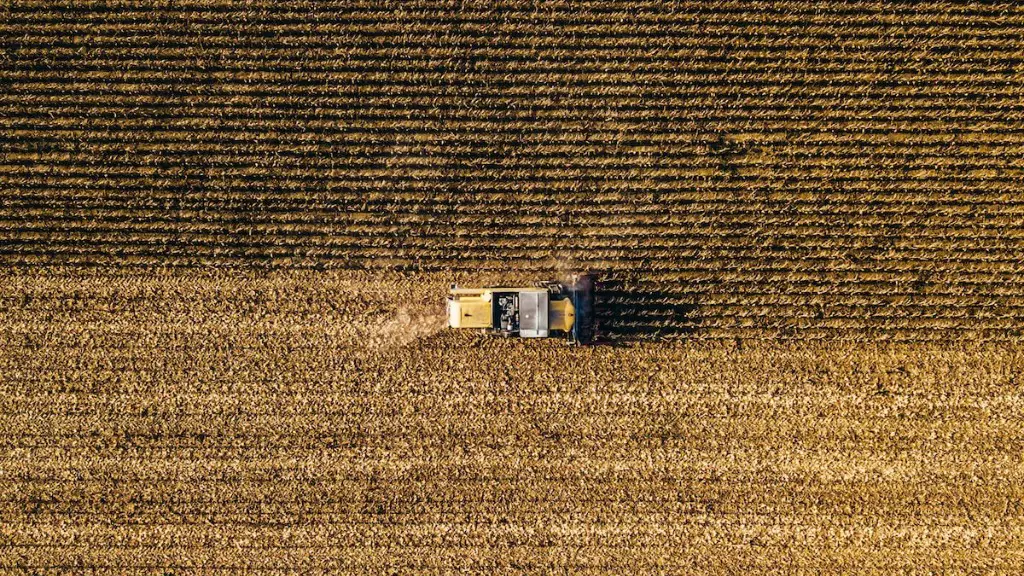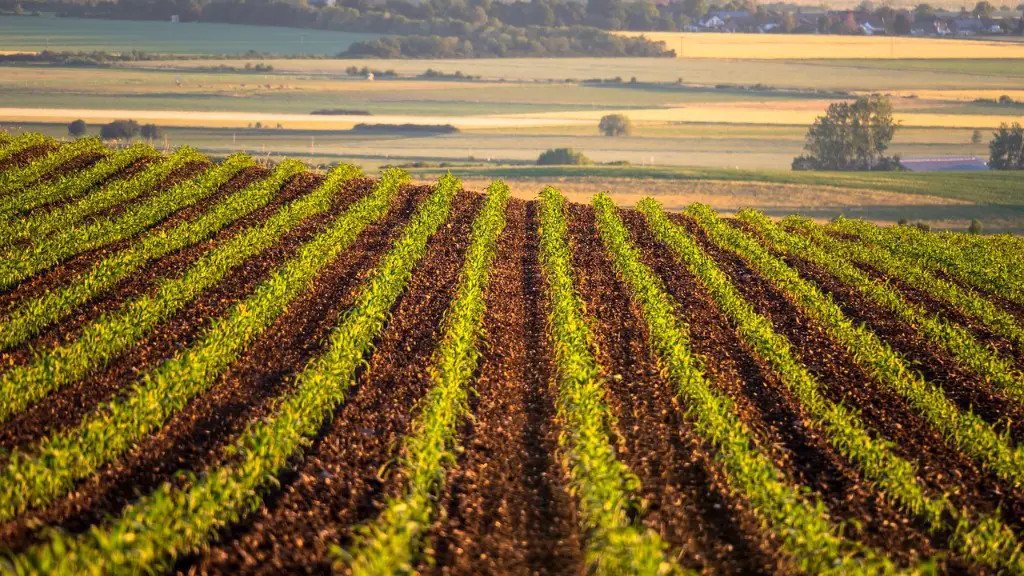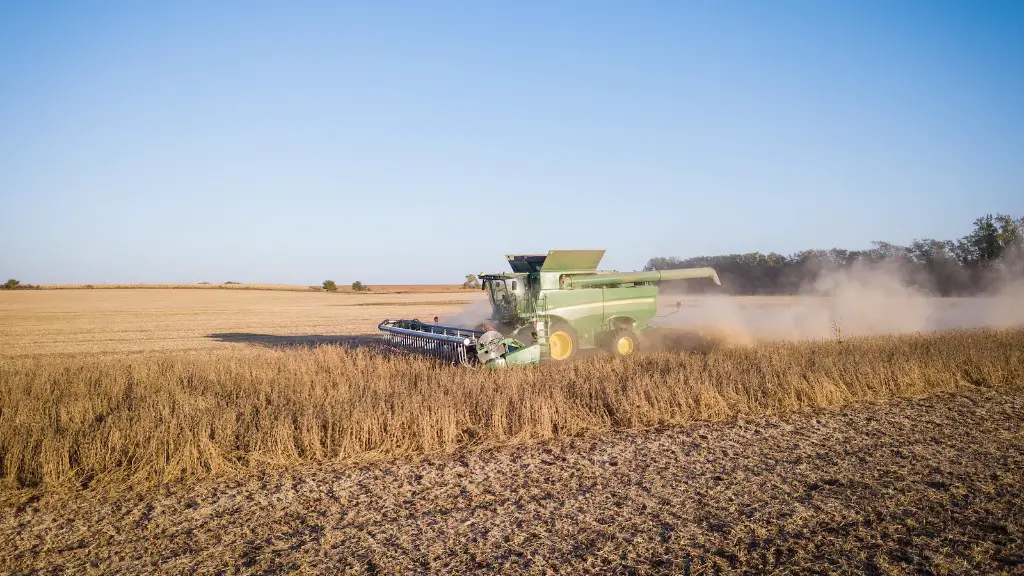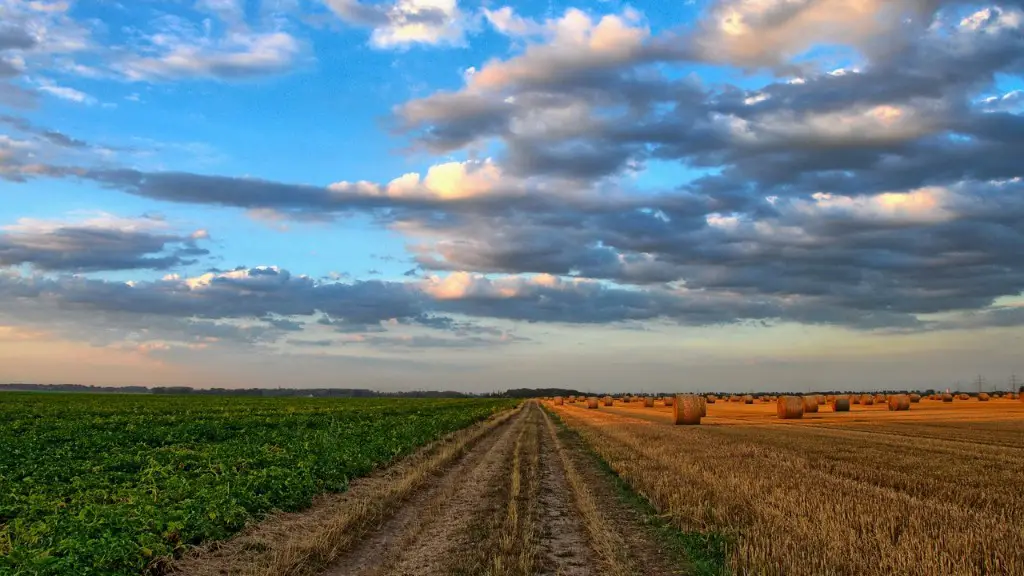GPS, also known as Global Positioning System, is a satellite navigation system used extensively in modern agriculture. It provides precise locations and times for farmers and agricultural scientists to accurately map the land and plan deliveries. GPS allows the agricultural industry to coordinate between local and global areas, receive precise directions and create accurate mapping of land and crops in order to increase production and improve efficiency.
In agriculture, GPS has revolutionized the way farmers manage their land. By being able to accurately measure distances, farmers can plan more precise routes while driving their farm implements. Furthermore, precision agriculture technologies employed in modern agriculture uses GPS as a base to accurately track and analyse data regarding the health and yield of crops. This data is then utilized to optimize crop quality, efficiency and cost reduction of the farming process.
Besides assisting with navigation, GPS can also be used to map out the soil type and even the type of vegetation growing on the land. This is achieved by a technique known as geospatial mapping, which maps out the land and determines the suitability of it for particular crops. It can even be used to record the temperature and humidity of the land to determine when to sow, irrigate and harvest different crops. This has been a major benefit for agriculture, since it reduces manual labour and ensures higher yields and profits by allowing farmers to identify areas in the land that are the most attractive for yields.
Farmers can also utilize GPS to monitor and control the application of their fertilizers and pesticides. By utilizing GPS, farmers can reduce the amount of chemicals used, resulting in better land stewardship as they use only the required amount of fertilizers and pesticides to meet the particular needs of their crops. This has allowed farmers to save time, effort and money while simultaneously preserving the environment.
Furthermore, GPS can also be used to track tractors and other farm machines to help farmers and agricultural specialists analyze the efficiency of their machines and determine what needs to be done to improve efficiency. This is beneficial to farmers in that they no longer need to make manual inputs and can gain insights into machine performance quickly and accurately.
Overall, GPS is a powerful tool that has become an essential part of agriculture. By being able to accurately map the land, receive precise measurements and monitor machines, farmers are able to make more informed decisions which has yielded higher yields, profits and quality of farming.
Advantages of GPS In Agriculture
GPS technology has provided a number of advantages to the agricultural industry, making farming more efficient and accurate than ever before. It has helped to reduce labor costs by allowing for precise and automated operation of farm apparatus such as tractors, balers and harvesters, thus allowing for more precise monitoring of input materials such as fertilizers and pesticides, resulting in better quality crops and higher yields. GPS also helps in the precise mapping of land, making it easier for farmers to identify the most suitable locations for their crops.
GPS technology has also allowed farmers to optimize their resources by providing precise data and analysis of the current land. This information can be used to determine what crops to grow, when and where to irrigate, and when and how to harvest the crops. This helps reduce unnecessary inputs and yields higher profits.
GPS technology has also enabled farmers to accurately tracking their machines, allowing them to analyze the performance of their machines. This gives them an insight as to how their machines are performing and allows them to identify any possible problems or issues which may lead to inefficient operation or cost savings.
In conclusion, GPS technology has proven to be a great benefit to farmers, providing them with more efficient and precise operation of their farm and resulting in better quality and higher yields. GPS technology has given farmers the the power to make informed decisions, resulting in higher profits, better stewardship of the land and a better quality product for their customers.
Limitations of GPS In Agriculture
Despite providing a great deal of advantages to the agricultural industry, there are a number of limitations to GPS technology that must be taken into consideration. The first limitation is the cost of purchasing the GPS system itself, and the additional cost associated with maintaining and operating the system. The accuracy of any GPS system is dependent on having adequate signal coverage, and many rural areas may not have sufficient coverage for reliable operation.
The accuracy of GPS technology can also be affected by other sources of interference, such as radio frequency or electromagnetic interference. GPS accuracy can also be affected if the satellites it relies on are in the wrong position or orientation. Additionally, GPS systems require the user to maintain a consistent velocity while travelling, which can be restrictive in certain terrain.
GPS can also be unreliable in certain weather conditions due to signal interference, and this can be a major limitation. Additionally, GPS systems are often more accurate when there are fewer obstacles in the environment, so they may not be suitable for locations with tall trees or buildings that block the signal.
Another limitation of GPS technology is the limited time frame it can provide. This can be a problem when dealing with long-term projects or tasks. Finally, the accuracy of GPS technology can vary depending on the equipment used, so it is important to ensure that the equipment is adequately maintained to ensure accuracy.
Impact of GPS In Agriculture
The impact of GPS technology on the agricultural industry has been tremendous. It has enabled increased efficiency and accuracy of operations, resulting in higher yields, better quality crops and higher profits for farmers. It has also enabled better land stewardship and resource management, as farmers are able to monitor and control the application of fertilizers and pesticides more accurately and precisely.
GPS technology has also enabled farmers to make better informed decisions based on their data and better analyze their machines and land. This has resulted in a reduction in labor costs, as well as increased profitability due to better planning and decision-making. Finally, GPS has allowed for increased safety, as it enables farmers to have an exact location of their land, making it easier to navigate and avoid potential hazards while operating farm machinery.
The use of GPS in agriculture has changed the way farmers operate. It has made their operations more efficient and has allowed them to better plan their crops and manage their resources in order to maximize production and quality crops. The impact of GPS in Agriculture is not to be underestimated, as it has enabled the agricultural industry to become more efficient, profitable and sustainable.
Future of GPS In Agriculture
GPS technology is an ever-evolving technology and its use in the agricultural industry is likely to grow in the future. As the technology continues to evolve, GPS systems will become increasingly sophisticated, providing higher accuracy and coverage for farmers. Additionally, advances in satellite imaging and sensing technologies will allow for greater detail and accuracy in mapping land, thus improving farmers’ decision-making capabilities.
GPS systems will also increasingly become linked to other technologies such as the Internet of Things (IoT), allowing for real-time monitoring and data analysis of machinery, crops and land. This will enable farmers to make rapid decisions based on the data received and ensure better resource management and conservation. Additionally, automated systems and vehicles could be used in conjunction with GPS systems to enable unmanned and more efficient operation of farm machinery.
GPS also has the potential to be linked to predictive analytics and machine learning to enable farmers to make better informed decisions about their crops and land. This could enable them to optimize their operations and maximize productivity and yield, thus allowing for greater sustainability and profitability of their operations.
Overall, GPS technology is likely to become a crucial part of modern agriculture with its increasing accuracy and coverage as well as potential for integration with other advanced technologies. By providing farmers with greater precision and efficiency, GPS will enable them to maximize their resources and increase their yields and profits, thus ensuring greater sustainability and efficiency of the agricultural industry.





